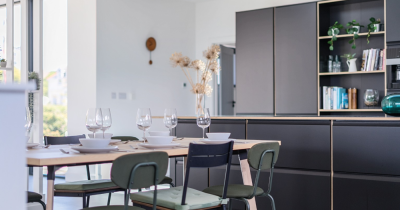Design Directory: Grade II listed homes
Here, we explore the charm and heritage of Grade II listed properties, showcasing how these beautiful buildings can be enjoyed alongside the comforts of modern living.

So, what is a Grade II listed building? They are defined by Historic England as “buildings of special interest”. In fact, 91.7% of all listed buildings are in this class, making it the most common type of listed property. The reason that around 500,000 properties in the UK are considered to be listed is to protect and celebrate a building’s architectural and historic interest and protect it for future generations. The older the building is, the more likely it is to be listed. Age, however, is not the only consideration as the youngest Grade II listed building in England dated as 1998!
There are some fantastic examples of notable and prominent Grade II listed buildings across England, including Alexandra Palace, the BT Tower and Abbey Road Studios. Many iconic buildings have gained listed building status due to their age, rarity, aesthetic merits, selectivity and national importance.
Many people choose to live in Grade II listed homes as they stand as a timeless monument to the past and a real opportunity to live in and help preserve a piece of history. From Tudor timber-framed cottages, to Georgian townhouses and Victorian mansions, these homes offer a glimpse into the past and display a true sense of craftsmanship that has stood the test of time.
A fine example of this type of home is this magnificent 18th-century estate in Lincolnshire which truly showcases how history and modern living can go seamlessly together. The home was built in 1802 by Henry Clarke, a wealthy brewer, banker and merchant. The property showcases beautifully preserved period features, impressive 16-foot ceilings, a vast wine cellar, and 11 acres of historical parkland.

If you choose to live in a Grade II listed property, there will be certain controls over what you can change both internally and externally in your property. There may be restrictions when it comes to any refurbishments or repairs that you would need to seek Listed Building Consent for. Whilst living alongside history, charm and character can be wonderful, it can also have its drawbacks. Some aspects of modern living that we have become accustomed to, such as open-plan kitchens and high-spec technology, may not be possible in a Grade II listed building.
Should you look to live in a Grade II listed property, consider yourself as a custodian of a piece of English heritage. These homes offer timeless elegance and, with that, a commitment to preserving a piece of national heritage for future generations to cherish.
If you are interested in buying or selling a Grade II listed home why not get in contact with the By Design team today.
Get in touch with us
First Name*
Last Name*
Mobile Phone*
Your Email Address*
Are you looking to*
Please enter message here*
Please confirm that it is okay for us to contact you about this information as well as products and services. (You will always be given the right to unsubscribe at any point in the future)*



